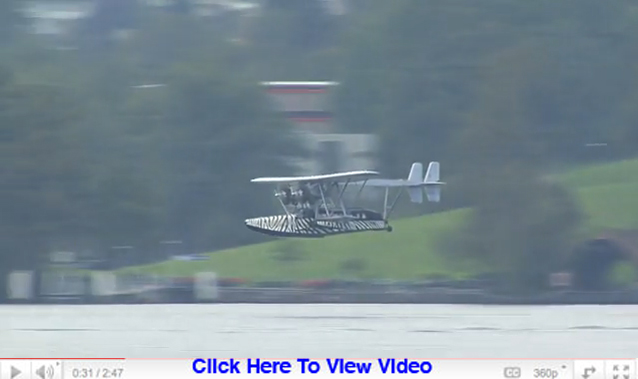
We recently had the pleasure of picking
the brains of DHL’s three wise men of the Chinese air cargo scene.
They talked freely about the changing nature of import and export demand,
the pros and cons of different airports for international cargoes, and
how China’s ‘Go West’ policy to develop its interior
regions is impacting air cargo movements.
 FT:
Four trends—industrialization of the
West, the production of more sophisticated products for export, growing
intra-Asia cargoes, and rising imports for domestic markets—are
transforming the air cargo picture in China. How is DHL adjusting its
strategy to manage these economic trends? FT:
Four trends—industrialization of the
West, the production of more sophisticated products for export, growing
intra-Asia cargoes, and rising imports for domestic markets—are
transforming the air cargo picture in China. How is DHL adjusting its
strategy to manage these economic trends?
Dongming Wu, Managing Director DLH-Sinotrans:
We will look closely
at the development of customer needs, which is the most significant
factor for any of DHL’s business decision-making or deployment.
Recently, we added direct flights from China’s business centers—such
as Beijing, Shanghai and Guangzhou—to the US, and established
an additional daily intercontinental route from Hong Kong to Cincinnati
as a direct response to meet increasing demands for services from South
China and Hong Kong to North America. We are also currently expanding
our China operations to cover most second and third tier cities across
China, especially in Central and West China. Branch offices have just
been set up in Zhengzhou, Taiyuan in Central and West China; Xuzhou
and Wenzhou in the east; and Huizhou in the south.
Wenjun Li, Head of Air Freight, China,
DHL: Global Forwarding: These trends have been reflected
in the 12th 5-Year Plan published by the Chinese Government. According
to the Plan, the next five years will see 56 new airports built, 16
airports relocated and 91 airports expanded. Most of these airports
are in Central and West China to cater to rising cargo and passenger
volumes. As a one-stop logistics service provider, we are developing
our air freight capacity in the central and western cities in partnership
with airlines and local airports.
 FT:
How does DHL source its uplift requirements
to and from China? FT:
How does DHL source its uplift requirements
to and from China?
Wenjun Li: We work in partnership
with major global carriers to manage bilateral capacity on trunk routes.
We deploy our capacity to and from Shanghai to cater to our customers
needs, supplemented by commercial uplift capacity to cover more destinations
so that we are the provider of choice for our customers.
FT: You
already have a major presence in Hong Kong, which gives access to industrial
centers in southern China. Are you also now seeing more demand from
customers for uplift from leading airports in Southern China as services
and rates available there improve?
Edward Hui, CEO, Hong Kong, Macau &
South China: Recent trends have seen cargo tonnage moving
into Southern China airports, mainly as a result of increased international
air link capabilities, lower handling costs, improved customs processes
and, most important of all, customer demand.  Customers
have recognized these improvements made in Southern China and are now
more open to direct uplift solutions. Hong Kong International Airport
has a competitive advantage over the Greater Pearl River Delta airports,
given its extensive international freight connections. Nevertheless,
Hong Kong should continue to strengthen its position as a key logistics
hub by enhancing its infrastructure, nurturing more logistics talents
as well as striving to improve its cost competitiveness and efficiency.
It should also seek closer collaborations with other cities in the Pearl
River Delta. Customers
have recognized these improvements made in Southern China and are now
more open to direct uplift solutions. Hong Kong International Airport
has a competitive advantage over the Greater Pearl River Delta airports,
given its extensive international freight connections. Nevertheless,
Hong Kong should continue to strengthen its position as a key logistics
hub by enhancing its infrastructure, nurturing more logistics talents
as well as striving to improve its cost competitiveness and efficiency.
It should also seek closer collaborations with other cities in the Pearl
River Delta.
FT: In
the Central coastal and Northern regions of China, which are your favored
gateways, how do find the relative service levels available at these
airports?
Dongming Wu:
For DHL, Sinotrans, Shanghai Pudong (PVG) airport and
Beijing airport (PEK) are used the most. More than half of our express
volumes are from East China, making it one of our largest markets. Service
levels at PVG and PEK are about the same for international flights.
DHL is upgrading its dedicated flights between PVG/PEK and Hong Kong
to accommodate growing business here. The North Asia Hub at PVG will
also help cater to the increase in volumes in the region.
Wenjun Li:
For DHL Global Forwarding, Beijing and Tianjin airports
are most utilized in the northern regions of China, and Shanghai Airport
for the central coastal regions. In terms of service levels, both Beijing
and Shanghai airports have commissioned state-of-the-art cargo terminals
in recent months that meet or surpass industry standards. Our largest
operations are in Shanghai, with almost two-thirds of the country’s
manufacturing located within close proximity.
FT: Parts
of Western China are very remote. Are you already establishing offices
there and which cargo sectors and geographic regions do you think have
the most potential?
Wenjun Li:
DHL Global Forwarding recently set up branch offices in
Henan Province and Shanxi Province, which are located in the central
and western areas of China respectively. Both offices are equipped to
offer a complete portfolio of all our services in an effort to further
enhance networks in the central and west areas, especially for the automotive
and hi-tech sectors. More imports can potentially impact costs for exports
as increased import airfreight will help service providers better manage
capacity.
Dongming Wu:
DHL-Sinotrans has established around 15 branches/service
centers in China’s west region. We have moved into developing
areas in West China, such as Tibet and Xinjiang Uygur Autonomous Region,
well ahead of the competition. With enhanced network coverage, we will
be able to provide stronger support to the economic development of China,
especially the Western regions. Areas such as Sichuan and Yunnan provinces
offer immense opportunities; there is a wide-ranging base of cross-industry
customers, mainly covering the fashion and apparel, FMCG and retail
sectors, as well as many low-capital manufacturing industries.
SkyKing |
